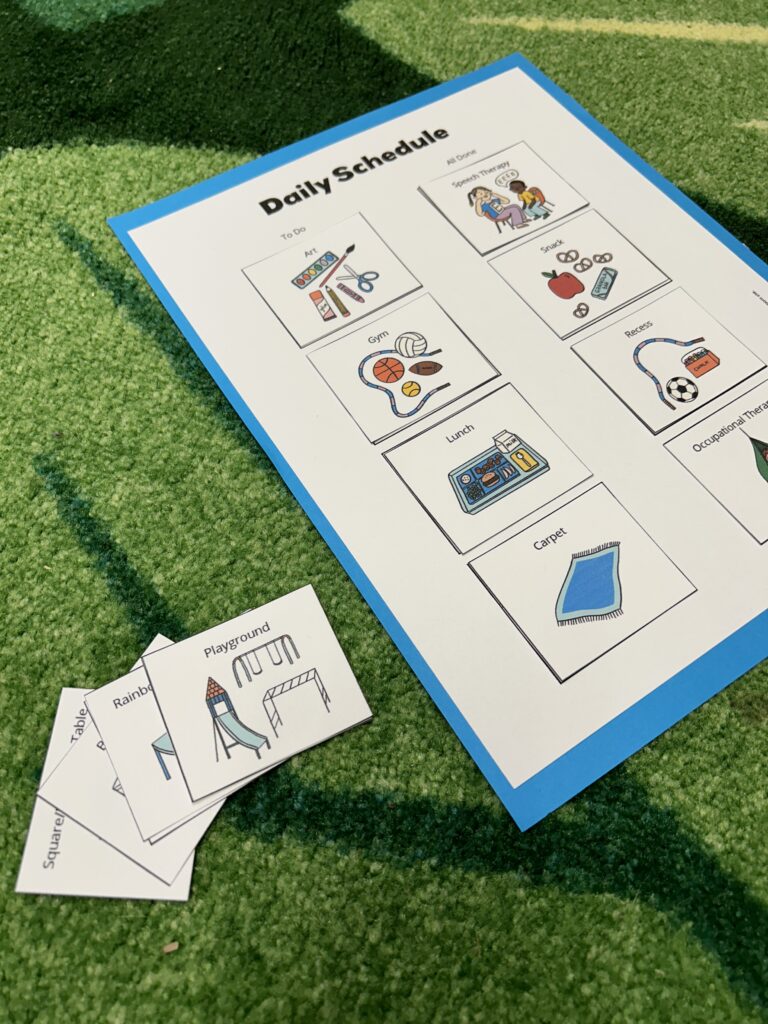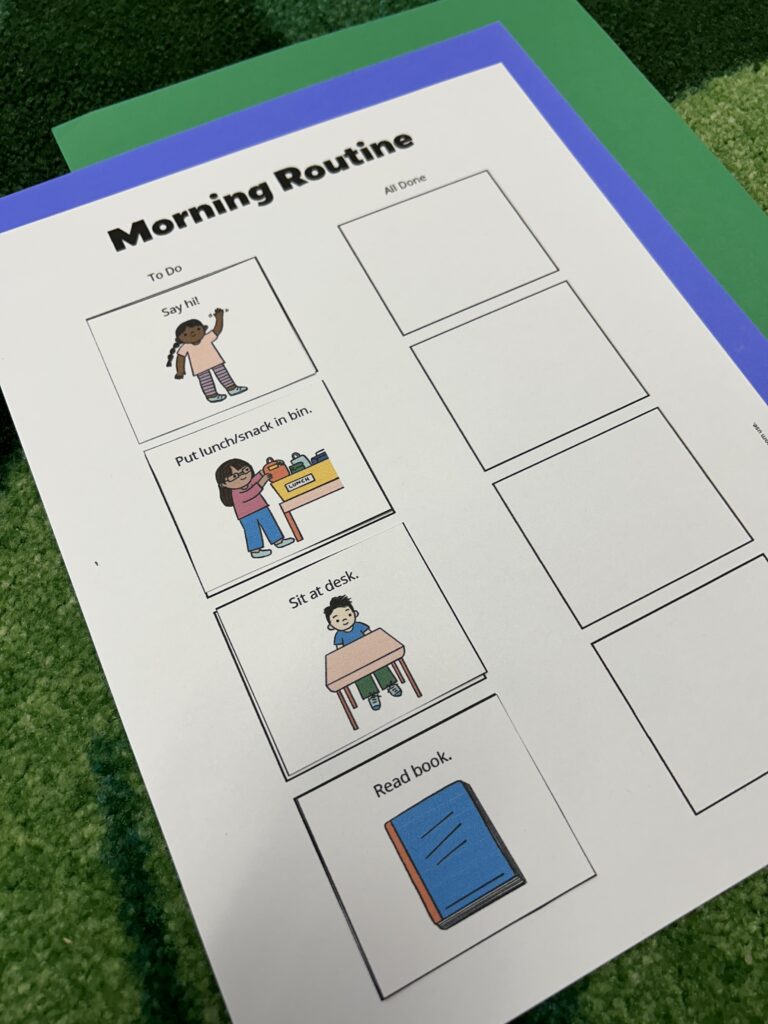A visual schedule sounds easy enough—a schedule with pictures. But it’s more than that. A visual schedule is meant to communicate where a child should be throughout the day or what a child should be doing. They are also meant to be an individualized tool that students learn to manage by themselves.
We created a bundle of five free printable visual schedule templates, including a:
- Daily Schedule
- First-Then board
- Work and Reward board
- Morning and Afternoon Routines
- Binder Schedule
Just fill out the form on this page to submit your email and get them all. Plus read on for more info about how to use your visual schedules.
What is a visual schedule?
A visual schedule uses pictures to show activities or the steps in an activity. They are often used to help students with disabilities, like autism, understand and manage their daily activities. Visual schedules can use pictures, photos, or words, depending on the child. And visual schedules can be used with kids from preschool through high school—it’s all about matching the visual schedule with the child’s needs.
A visual schedule will have pictures for daily routines, like reading, math, and lunch. It will also have things like weekly specials and events, gym class, art, speech or occupational therapy. It may also have images for occasional events, like a field trip, picture day, or a fire drill. All the pictures can be changed out so that the student can see what is going to happen that day.
A student may use a visual schedule for the entire day or a portion of the day. For example, a child may use a visual schedule to help them during a non-preferred activity. There may be separate pictures for each part of a reading group lesson to help the child stay focused and complete all the activities.
A visual schedule may also help a child learn and practice a routine, like using the bathroom and washing hands, or how to take out, use, and put away a classroom material. A morning routine visual schedule, for example, may have pictures to show a child the steps they need to complete when they arrive (unpack backpack, fill water bottle, etc). The idea is that the student has the opportunity to practice and learn the routine, with visual supports to give structure and reinforcement.
Who needs a visual schedule?
Visual schedules are typically for kids who are autistic, have ADHD, have developmental delays, or who process visual information easier than auditory or written information. A visual schedule is a very specific accommodation and will typically be recommended for a student based on an individual education plan (IEP) or Multi-tiered Systems of Supports (MTSS) meeting.
Read more: What Is MTSS? and What Is Special Education?
Visual schedules for autism
For students with autism, who often have strengths processing visual information and deficits processing auditory information, visual schedules provide a quick way to see where they are supposed to be or what they are supposed to be doing.
For autistic kids, visual schedules:
- Increase understanding through the use of images
- Provide predictability and routine
- Communicate changes in routine in a familiar way
- Help students understand what is expected of them without having to rely on verbal directions
- Provide some control over their schedule as they move the image from “to do” to “done”
- Generate independence as they learn to manage the visual schedule themselves
The ultimate goal of a visual schedule is for the student to learn to manage it themselves. So, at the start of the year, you’ll be teaching and reinforcing the routines and images, but in winter and spring, start handing over the task of managing the visual schedule to the student.
Visual schedules for ADHD
For kids with ADHD, who may struggle with executive functioning and processing verbal directions, visual schedules can:
- Provide organization for their day or an activity
- Help them know what’s expected of them
- Reduce stress around transitioning from one activity to another
- Reduce behavior concerns related to understanding what is expected of them
What is included in our visual schedule bundle?
We’ve provided five different versions of visual schedules that you can download and use with students in your classroom.
How do I assemble my visual schedule printable?
Get ready to cut and laminate!
- Print out the schedule you need.
- Use the images we provided or pull your own from photos of your classroom and students.
- Laminate the images.
- Add Velcro on the back.
- Post the schedule where your student can access it. For example, you may put the schedule at the student’s desk, or you may have it in a binder that they refer to after every lesson.
Get Your Free Visual Schedule Templates
Just fill out the form on this landing page to get instant access to all five visual schedules featured above.






